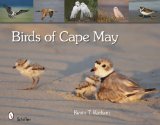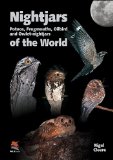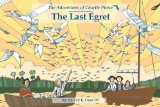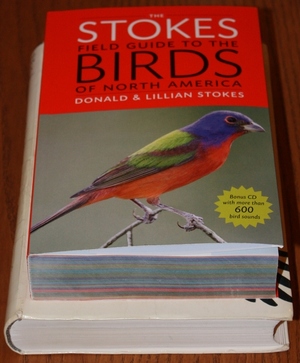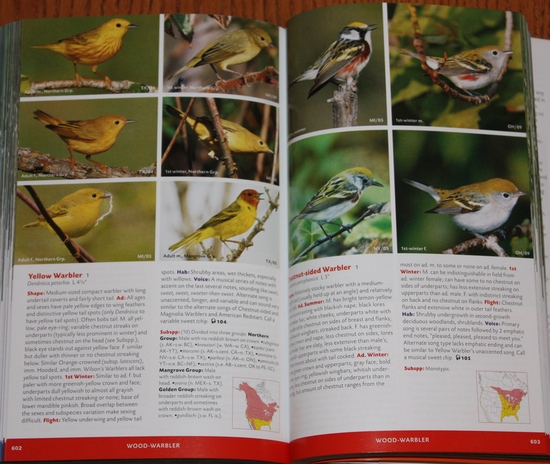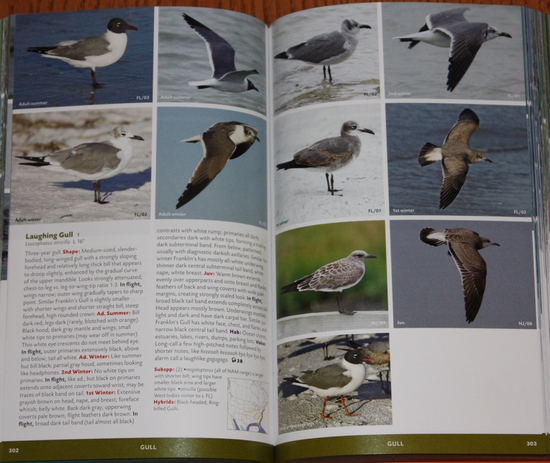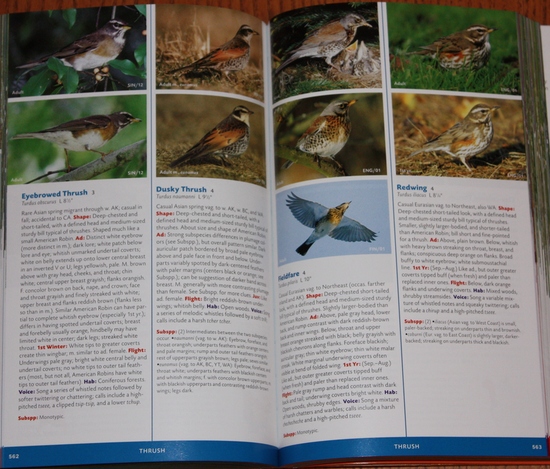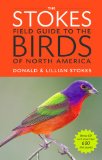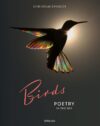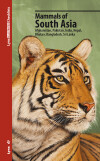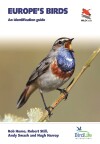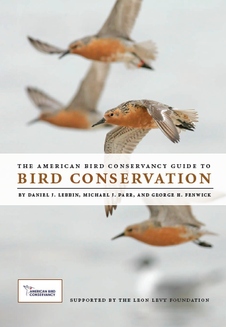
A “press webinar” about the just-published American Bird Conservancy Guide to Bird Conservation
is going to be held on November 4th at 3:00 p.m. EST. I just received a copy of this book, and it contains just about everything one would want to know about bird conservation in North America. There are accounts for 212 species on the WatchList, descriptions of twelve habitat types (called “birdscapes” here) including threats to them and accounts for some representative Important Bird Areas, and a comprehensive list of threats faced by our birds. There is also a chapter on international conservation, including habitats and threats.
I’m not sure what the webinar will consist of, but all three of the book’s authors will be participating, as well as acclaimed novelist Jonathan Franzen, who wrote the forward.
Here are the details:
When: November 4th at 3:00 p.m. EST (Washington, D.C. embargoed until 4:00 p.m. EST)
Web Connection: Click here to join
Audio Connection: (US/Canada): +1-408-600-3600 Access code: 669 563 475
If you missed it, the recording of the event is now available.
Here is some more information about the book from the press release:

As populations of many American bird species continue to decline, hope stems from a new book, hailed by critics and described as the most authoritative and definitive work ever to address the many threats imperiling birds in the Americas. The book, entitled The American Bird Conservancy Guide to Bird Conservation, is published by American Bird Conservancy (ABC), the nation’s leading bird conservation organization. The book includes a foreword by novelist Jonathan Franzen, and features over 500 photographs, maps, and illustrations.
“Hands down, this is the most important book of the year, one every birdwatcher should own,” says the December edition of Birder’s World Magazine.
“One third of all American bird species are in trouble and this book is the clearest, most authoritative account ever published of the threats these species face. Until now, remarkably, no single book has tackled the issue comprehensively,” writes Franzen, a member of the ABC Board of Directors. “Particularly valuable is the attention paid to seabirds and Hawaiian birds, whose troubles are severe and often overlooked.”
“This guide presents a comprehensive classification system and threat analysis for bird habitats in the United States, the most thorough assessment of threats to birds published to date, as well as actions needed for priority birds of conservation concern,” said ABC President George Fenwick.
The book also presents a “Strategic Bird Conservation Framework”— a blueprint for the future of bird conservation—that will facilitate the ambitious task of protecting America’s birds and their habitats for the future. This framework is depicted in the form of a “pyramid”, with progressively more bird species being addressed at each level of action from the rarest species at its tip to all species at its base.
The Framework enables conservation practitioners to identify the critical actions that need to be taken for birds at any geographic or biological scale. It provides a simple means of ensuring that all the most significant bird conservation priorities are addressed.
Importantly, the new book also outlines an array of specific actions needed to protect the rarest bird species in the Americas, conserve and enhance bird habitats, eliminate the most damaging threats to our birds, build capacity within the bird conservation community, and garner the science to support the needed conservation work.
The book is divided into five chapters, plus an introduction that features a narrative and pictorial chronology of modern bird extinctions in the Americas, a brief history of bird conservation, and a listing of historic landmarks in American bird conservation. The 446-page, hard-cover was co-authored by ABC Conservation Biologist Daniel Lebbin, ABC Vice President Michael Parr, and George Fenwick. The book editor was ABC Communications Vice President Gavin Shire.
The opening chapter focuses on “WatchList” birds, a subset of species identified by conservation groups including ABC that, without conservation action, are in danger of becoming threatened or even extinct. Information is provided for 212 such species, prioritized for conservation in the United States. Information includes the Watchlist score that concisely summarizes each species’ status, its global population estimates and trends, conservation efforts underway, and significant threats and priority actions needed.
The second chapter focuses on habitats in 12 “Birdscapes”: eleven natural (nine terrestrial and two aquatic) and one “Human Birdscape.” Each of these sections begins with a stunning, two-page wide artistic depiction of the birds, habitats, and threats that occur within the Birdscape and are described in subsequent pages. The sections provide an overview of each habitat, its WatchList birds, threats, ongoing conservation efforts, needed conservation actions, and a listing and description of some globally Important Bird Areas in each Birdscape. Fifty representative Globally Important Bird Areas are described in total, with multiple areas profiled in the states of Hawaii, Alaska, New York, California, Colorado, Arizona, North Carolina, Pennsylvania, Texas, and Delaware.
The third chapter deals with threats to birds including habitat loss, invasive and overabundant species, bird collisions, exploitation and persecution, fisheries, pollution and toxics, and climate change. For each threat, the specific problem is identified, solutions described, and recommended actions listed.
For example, outdoor and feral cats are estimated to number about 95 million in the United States. Using the most conservative predation rate on birds (5.6 bird kills per cat per year), an estimated 532 million birds are killed annually by outdoor cats. Suggested actions listed in the book include education campaigns asking cat owners to keep their cats indoors and making the feeding of feral cats illegal.
The fourth chapter addresses international bird conservation issues. Only about five percent of bird species found in the United States occur in no other country, which means that most U.S. birds also depend on staging and wintering areas far beyond U.S. borders. The International Chapter is organized like the previous three chapters, providing an overview of the most endangered species, habitats, and threats occurring in Latin America and the Caribbean.
The last chapter focuses on bird conservation strategies and actions structured around the “Strategic Bird Conservation Framework,” providing the roadmap for bird conservation and how the reader can become more involved.
Near the end of the book is a handy, quick-reference guide to bird conservation for each state. In California, for example, this section lists 22 WatchList species in the highest (Red) category, including the California Condor and Mountain Plover; cites the most endangered habitats – including oak woodlands and freshwater marshes; identifies the key threats (including fire suppression and invasive diseases such as sudden oak death syndrome), and lists key needed bird conservation actions such as restoring riparian woodlands and San Francisco Bay.
The book was funded by a grant from the Leon Levy Foundation and is published by The University of Chicago Press and Lynx Edicions. It is available through most online book sellers and book retailers. To order, see: www.abcbirds.org/aboutabc/guide/index.html.
American Bird Conservancy conserves native birds and their habitats throughout the Americas by safeguarding the rarest species, conserving and restoring habitats, and reducing threats, while building the capacity of the bird conservation movement. ABC is a 501(c)(3) not-for-profit membership organization that is consistently awarded a top, four-star rating by the independent group, Charity Navigator.

